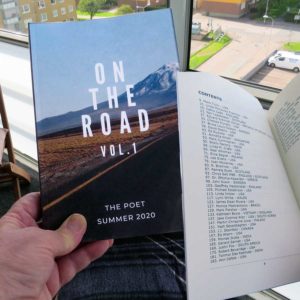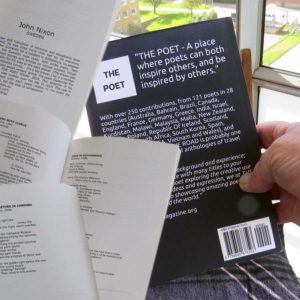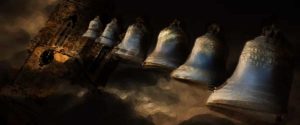I started the year with a poem published in the winter edition of The Poet. Not a bad start to the year as it was my first published poem for a decade. This week I’m celebrating the midpoint of 2020 with four more poems in The Poet’s summer edition. (And one is called “Flying with Icarus”.)
The Poet: On the Road

The theme this summer is On the Road and my four poems are all snatches of character and imagery from my travels: from Bulgaria, Spain and Sweden. I’m not going to share the poems here. That wouldn’t be fair on The Poet. If you’re interested you can buy a copy. I am in volume 1, pages 99-102. Ah, come on! The Kindle edition is only £4.
That said, the fourth poem, “Together in Cordoba”, is already posted here as one of my Articulations. I wrote it about 10 years ago in response to a challenge by my Twitter friend Savannah. Perhaps I should say that I completed it then. It existed already in embryo. I suppose you could say that all of the four poems collected in On the Road existed in embryo before I offered them to The Poet.
50/50-ish
They form part of my autobiographical series that goes by the working title of 50/50-ish. Originally there were going to be 50 poems of 50 words each, and I started writing them in my 50th year. But here I am, now, pushing 62 and I’ve still not finished. So what am I going to call the book when it’s finally complete? I guess I’ll find a way to cross that bridge when I come to it.
Meantime I was not going to write about this today, but I received my copy of The Poet little earlier than I expected. (Yes, I have bought a copy of the printed-on-paper book.) So here we are.
Though I’m not going to share the poems, I thought I could share the stories behind them.
Stories
The story of the fourth poem you can find by following the link above. Working backwards, the third poem came to be when I was invited to attend a Kurdish wedding. I was living and working in Sundsvall in the north of Sweden at the time and I think I was invited as a friend of a friend. At one point a lot of the men got up and danced a chain dance, similar to ones I’ve seen danced in the Balkans. Similar also to some Jewish dances. The guy at the end of one chain caught my eye, and he’s the star of my poem. He did look remarkably like some of my cousins.
The second poem, about Esme, captures a moment during a slightly fraught car ride through Gothenburg. Now, it’s my home city, but then in 1985 I was relatively new to the town. I was helping a colleague move house and Esme was his friend and, I think, the only one of us who had a driving licence and a car. Of course, in the 30+ years since, the Swedish clothing chain Hennes och Mauritz has become the internationally ubiquitous H&M. Now everybody wears bloody H&M clothes.
Flying with Icarus

The poem of the four that I’m most happy with is the first, “Flying with Icarus”. In 1982 I was working as a teacher of English in a school in Sofia in Bulgaria. I used to travel to and from work most days on public transport. Until I came to Bulgaria, I’d never ridden on a concertina bus and the novelty was part of the attraction. The Sofia buses were built in Hungary by Icarus – well, OK, by Ikarus – and each one bore the name. Flying away in one was about as likely as escaping from Crete, borne aloft on wings made of feathers and resin.
Sofia’s buses were very well used and very poorly maintained. They creaked and shook and occasionally lost pieces, but they worked and they didn’t break down (much). In 1982 the communist regimes of Eastern Europe still had a decade left to run. We none of us could foresee how quickly they would collapse in the early 90s. In fear of the Secret Service, who spied on their own people, especially those who worked with foreigners, my colleagues only expressed criticism of the state to me in low voices and while there was a lot of noise around. As in the screaming, flexing concertina section of an Ikarus bus rumbling over broken asphalt.
Concrete attempt
I can say the poem also attempts to be a bit concrete. The form tries to imitate an articulated bus, from the front entrance by the driver, past the crowded seats, across the dangerous-seeming concertina section and finally out by the rear exit.
I returned to Sofia a few years ago, long after the fall of communism, and found not a single Ikarus bus left running. The concertina buses in Sofia, now, were made by Mercedes-Benz. But they were just as well filled, and just as worn, poorly maintained and noisy as I remembered.




